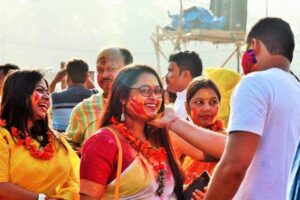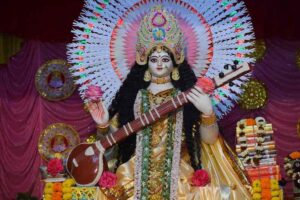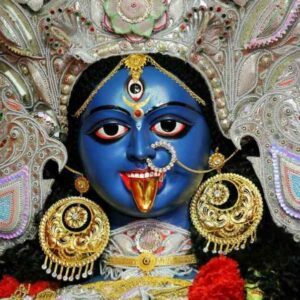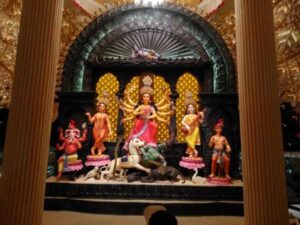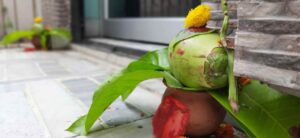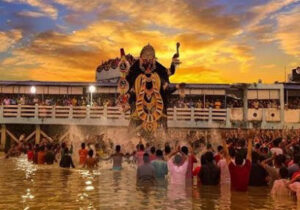Hindus worship goddess Lakshmi(Lokkhi) for wealth and prosperity. The first full moon day(Purnima) after the Shardiya Durgotsab is celebrated as Kojagori Lokkhi Puja in Bengal. It is also the last full moon day of the Hindu calendar month of Ashwin, which falls between October and November. Kojagari Puja Purnima is popularly known as Sharad Purnima in most parts of India.
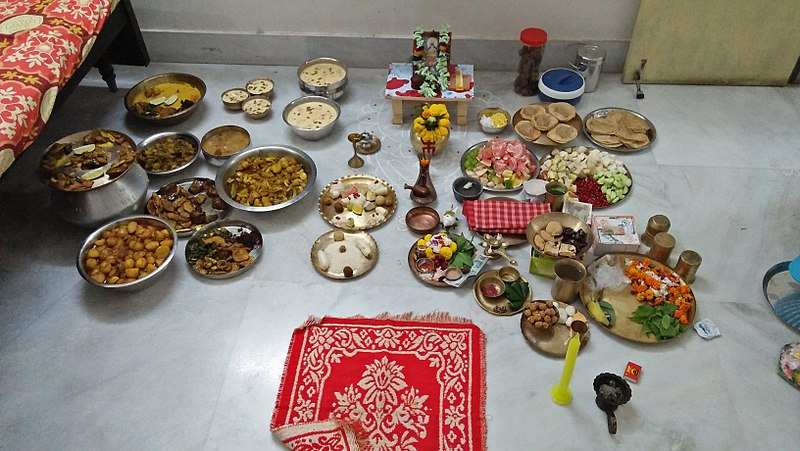
The majority of Indians worship the goddess on Amavasya Tithi during Diwali. But, in West Bengal, Orissa, and Assam, Kojagari Kojagori Lokkhi Puja is the main Laxmi Puja, and natives celebrate this with great zeal and devotion.
Lokkhi Pujo is a grand homely festival in Bengal, and every Bengali Hindu household worship the goddess. Most Bengalis worship Her every Thursday throughout the year.
Why Kojagori Lokkhi Puja is celebrated?
As per popular opinion, Laxmi is the goddess of monetary wealth (dhan Lakshmi), but in Kojagari Puja, people worship Lokkhi as the goddess of grain resources (dhanya Lakshmi).
The word Kojagari originates from Ko Jagati, which means Who are you awake? It is believed that on the day of Kojagari Lakshmi Pujo, the goddess descended from heaven to earth and blessed everyone by going from house to house. But goddess Lakshmi does not enter the home of those whose door is closed, and She leaves that place without bestowing blessings. That is why it is customary to worship the goddess on Lakshmi Pujo night.
In the old days, on Kojagori Lokkhi Puja, people used to leave their doors unlocked for the entire night. People nowadays turn on the lights of the Puja room and leave its door open on that night.
According to the folklore, once a king was in great financial distress. His queen worshipped the goddess of wealth, Laxmi. She fasted and kept vigil at night. As a result, the goddess blessed them and restored their prosperity.
The rituals of Kojagari Lokkhi Pujo vary from community to community. Bengali Hindus from East Bengal(present-day Bangladesh) started the Kajagari Lokkhi Pujo celebration, but now it is celebrated in every Bengali household. However, one can observe the stark difference between the puja methods of people of East Bengal origin and native Bengalis.
The idols of Goddess Lakshmi are put up in houses or pandals in the neighborhood. Some households also worship the photo of the goddess Laxmi. Many people who have roots in East Bengal worship the earthen pot with images of Durga and her children.
Lokkhi Puja Alpona
Alpona is an important part of any auspicious ritual performed in Bengali homes. Rice flour and water are combined to make alpona paste. It is traditionally drawn with fingers. Nowadays, people also use a paintbrush to draw elaborate designs.
Women draw Alpona on the altar, floors, chowkis, or pidhi and in front of their homes on the day of Kojagara Puja. Alpona is also drawn on the entry point of every room and near the rice container (Chaler Dram).
Traditionally there are specific designs dedicated to the goddess Lakshmi. The most common motifs for Lakshmi Puja are ears of paddy husk (Dhan er chhora), lotus, Lakshmi’s feet, owl, and floral designs.
The Alplona symbolizing the feet of goddess Lakshmi is most commonly seen at homes. An inverted ‘S’ symbolizing the feet of the goddess is drawn in front of all the doors and the main entrance of houses to welcome or invoke the goddess.
Kojagori Lokkhi Puja Vidhi
Before beginning the puja, one must bathe and cleanse herself. It is also necessary to clean the Puja room.
Then, under the supervision of a priest, an elaborate Lakshmi Puja is performed. In most of the houses, married women perform this puja.
On the day of Kojagori Puja, devotees worship Lakshmi with devotion and dedication to receive Her generous blessings.
Some devotees, especially women, also keep fasting during Kojagari Puja. Only after completing the puja at night, they eat.
Ghot Staphan(Kalash Staphana) is one of the most important rituals of Lokkhi Pujo. During puja, Ma Lakshmi is said to reside in the ghot.
How to make the Lokkhi Ghot for Kojagori Lokkhi Puja?
The items to prepare Lokkhi Ghot vary from one community to anothe.
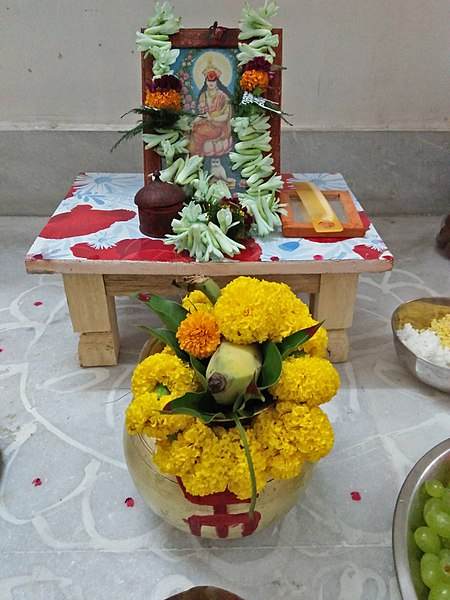
- Place the Ghot on the heap of paddy or rice grains.
- Make a Swastik sign on the Ghot.
- Arrange the mango leaves on the Ghot (usually five mango leaves from a mango tree that bears fruit).
- On the Ghot, place the bilva leaves(bel pata), Scutch grass(Durba), and betel leaf(paan pata).
- On top of Ghot, place a green coconut with stalks (Seesh daab) or a banana.
- Put a red cloth or gamcha and place a poita on top (sacred thread). You can cover the Ghot with flowers or a garland. The red lotus is the favorite flower of the goddess. Generally, people place it on the top of the Ghot.
- Some people also light a lamp(prodip) in the puja room and ensure that the candle remains lit throughout the night.
- To please the goddess and seek Her divine blessings, various offerings such as khichuri, narkel naru, sweets, and multiple types of fruits, are made. Some also offer saree and Alta-sindoor to the goddess.
The woman then performs the arati, gives pushpanjali, and reads the lokkhi Panchali.
Devotees, particularly women, read Lakshmi Broto Katha to ensure peace and happiness in their homes. It is also known as Lokkhi Panchali, and devotees read it out during the Lakshmi Puja.
Kojagori Lokkhi Puja bhog
Pujo in the Bengali community is incomplete without a lavish feast or bhog.
The traditional bhog, or food, offered to goddess Lakshmi is distinctive. Khichuri, a mixed vegetable dish known as labra or chorchori, and five types of fried vegetables(bhaja) are offered to the goddess. Coconut and til or sesame seed ladoos are a must. Women cook all the items and present these to the goddess on banana leaves, earthen pots, or metal plates and bowls.
The feasty divine platter usually consists of murir moa (puffed rice balls), til er Naru (black sesame seeds laddoo), narkel Naru (coconut jaggery laddoo), murki (candied popped rice), and bhoger khichuri, labra, chutney, and payesh.
Luchi / poori, sooji, cholar dal/ chana dal, chanar dalna / paneer curry are additional components that contribute to the feasty appearance.
Kojagori Lokkhi puja is more than a religious ritual. Guests are invited, and a get-together event followed by a grand feast also happens along with the puja.
